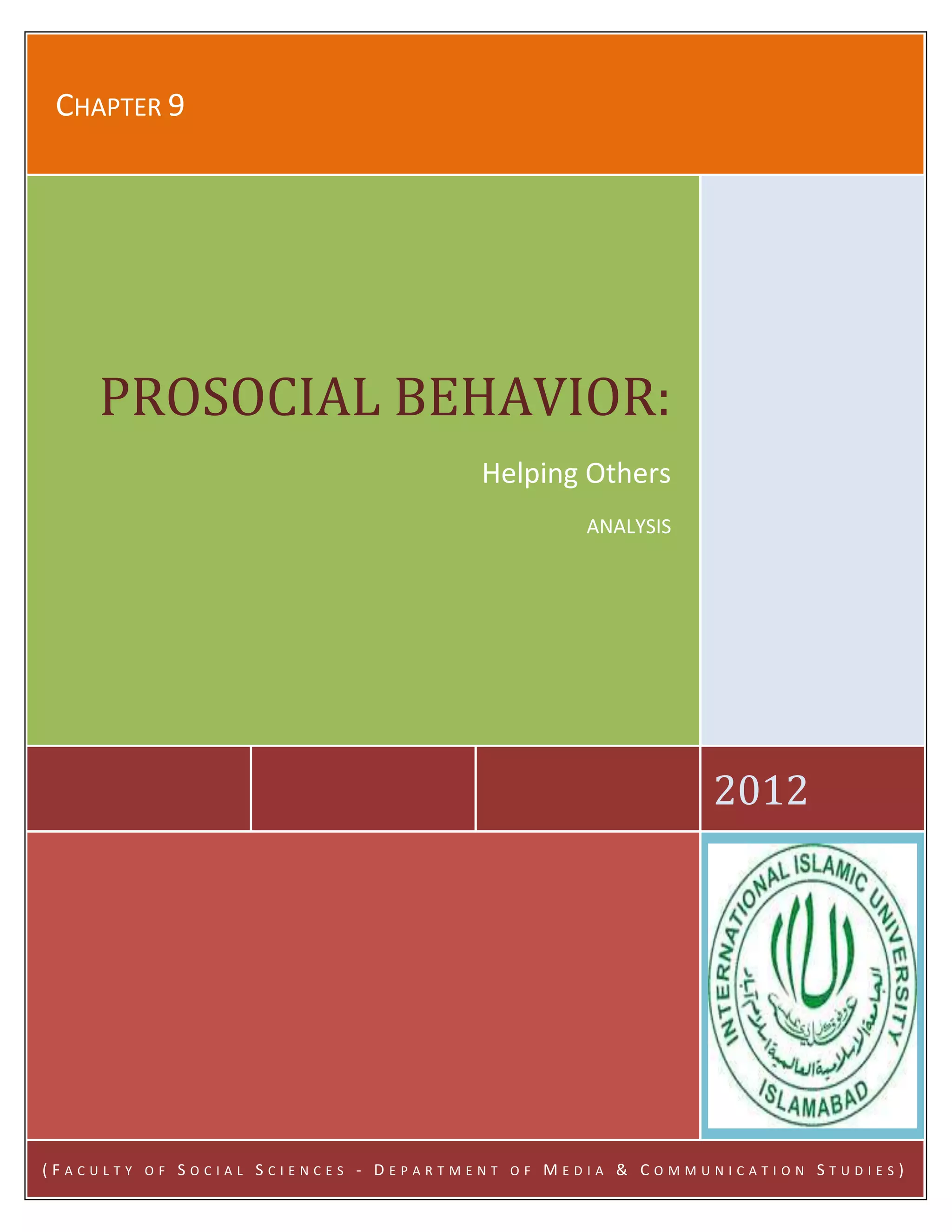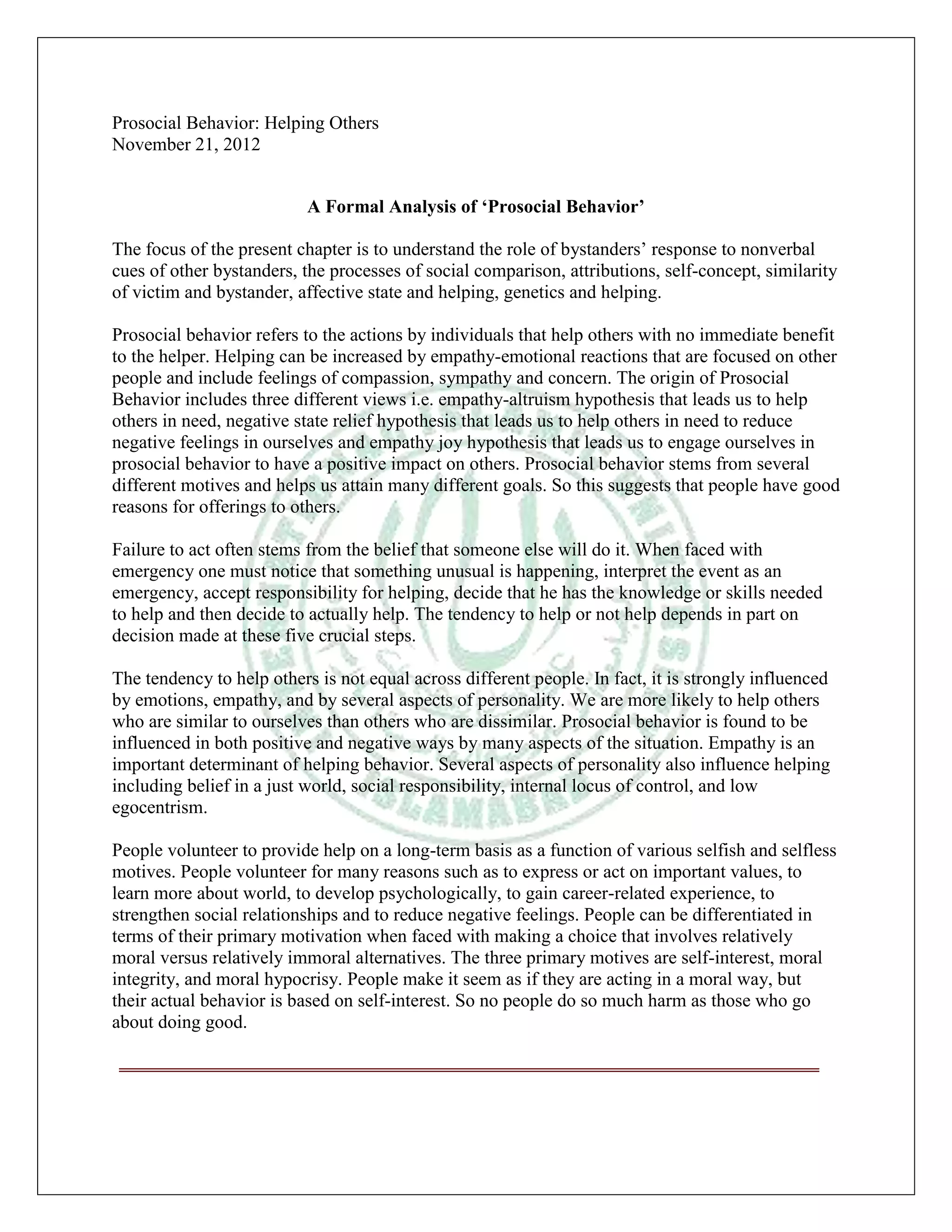This document analyzes prosocial behavior, which refers to actions that help others with no immediate benefit to the helper. It discusses several factors that influence helping behavior, including empathy, emotions, personality traits, and how similar the victim is to the helper. Failure to help often stems from diffusion of responsibility, where people assume someone else will help. The tendency to help depends on noticing an emergency, accepting responsibility, having the skills to help, and deciding to help. People volunteer for both selfish and selfless reasons, such as expressing values, learning, psychological development, career benefits, and strengthening relationships. Motivations can involve self-interest, moral integrity, or moral hypocrisy of claiming to help for moral reasons while actually acting

